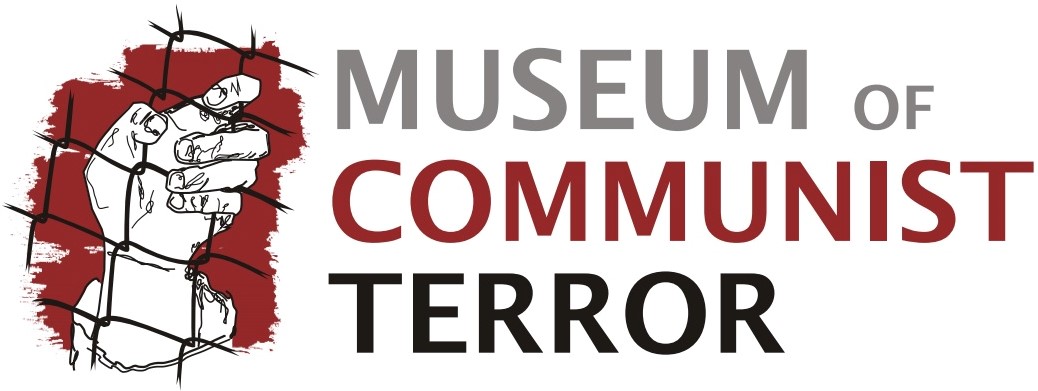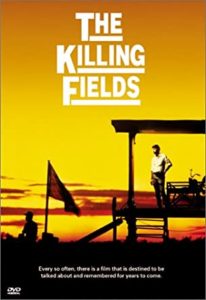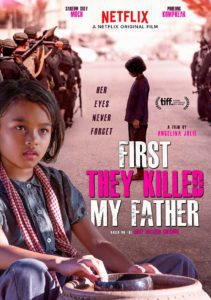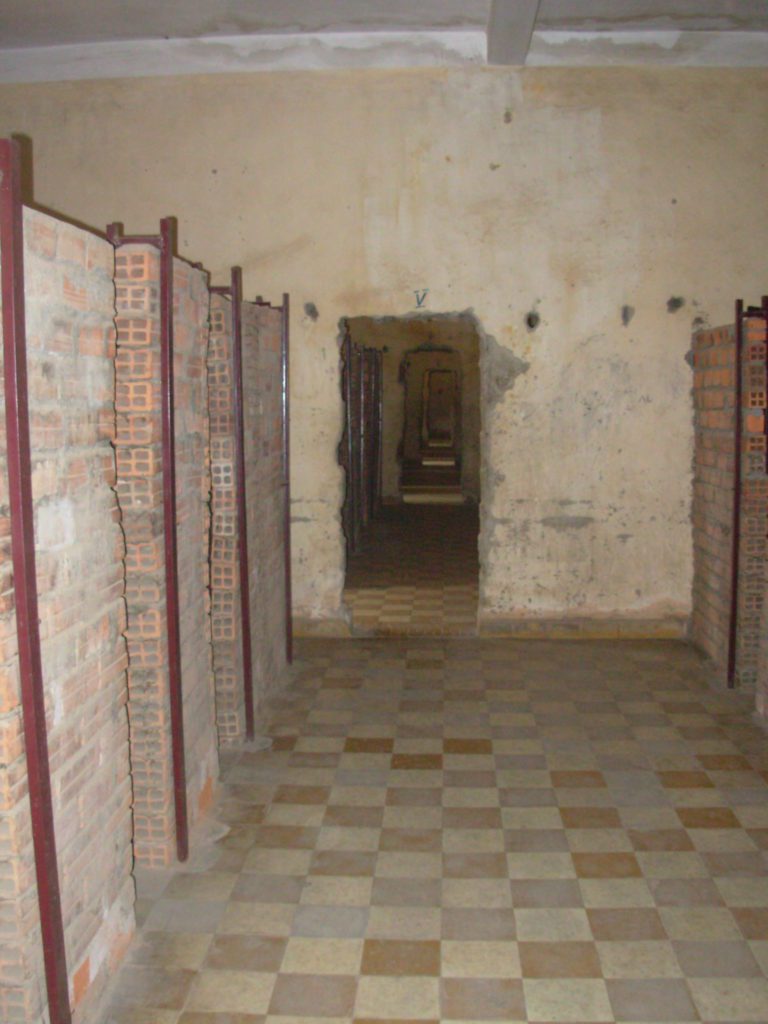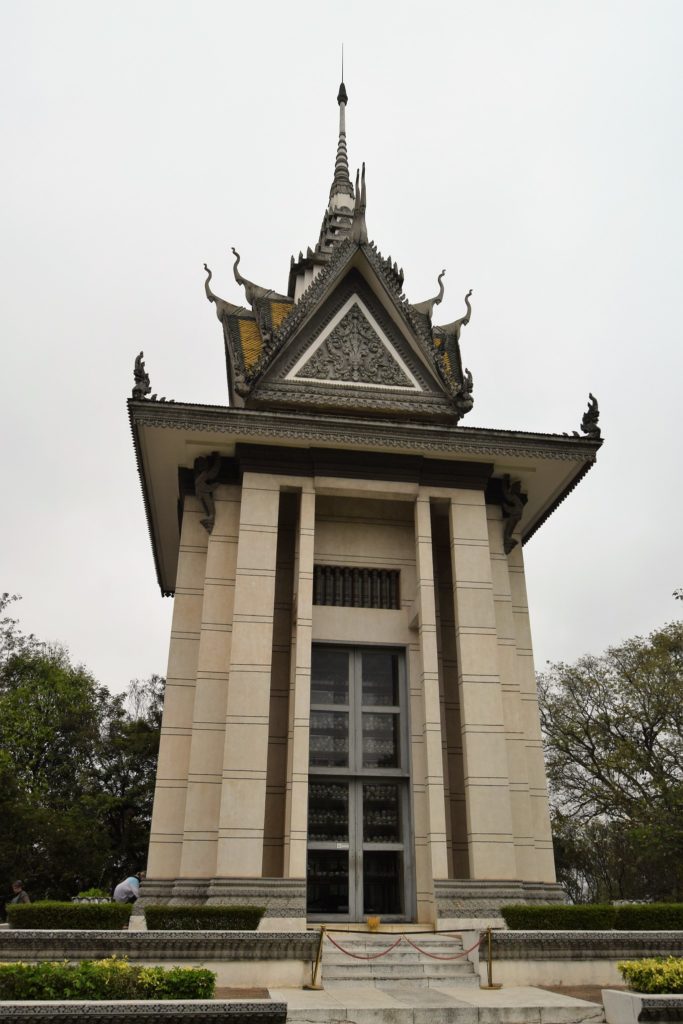“The Killing Fields” is a phrase that has come to mean mass killings and deaths by starvation that took place at the hand of the communist regime in Cambodia between 1975 and 1979. The name arose from the many deaths which took place literally in the fields of Cambodia.
Overall, at least 1.5 million people were killed or starved to death. These deaths were a higher proportion of the population than that of all the other purges and periods of starvation in other communist regimes in the 20th century. Between 21 and 24 per cent of the population is estimated to have died.1
The Communist Party in Cambodia was known as the “Khmer Rouge”. “Khmer” was a reference to the ancient Khmer Kingdom which ruled over the region and “Rouge” – French for red – reflected the party’s communist ideology. The Khmer Rouge initially grew out of the Viet-Minh; a communist movement in Vietnam which sought the expulsion of French occupiers not just from Vietnam but from Cambodia and Laos, too. Consequently Cambodians were allowed to join, including the man who became the leader of the Khmer Rouge, Pol Pot.2
Pol Pot
With continued Viet Minh support – and, more crucially, support from the Chinese Communist Party – the Cambodian Communist Party grew and formed its own distinct independence movement.3 On 18 March 1969, the USA began bombing part of Cambodia close to Vietnam in an attempt to destroy a route used by North Vietnamese communist forces to infiltrate South Vietnam. It was known as the Ho Chi Minh trail after the leader of the North Vietnamese government.4 The bombing caused thousands of Cambodian casualties which increased support for the Khmer Rouge.5
Cambodia at that time was ruled by Prince Sihanouk. Under Sihanouk’s leadership, the French had granted Cambodia ‘internal autonomy’ in 1946, but refused to grant them full independence. Low-level conflict erupted as a result and, due to both this conflict and France’s defeat in neighbouring Vietnam, the French relinquished sovereignty over Cambodia in 1953. After the Geneva Conference of 1954, mediated by Switzerland, France formally recognised Cambodian independence. But in 1970, Sihanouk was deposed in a right-wing coup led by the nationalist and anti-communist Prime Minister, Lon Nol.
Khmer Rouge guerrillas
The Khmer Rouge opposed Sihanouk for his autocratic and ‘feudalistic’ rule.6 But after Sihanouk was deposed, the Khmer Rouge formed an alliance of convenience with him against the new government. The Prince was popular with the peasants and the alliance increased the number of Khmer Rouge troops from 6,000 to 50,000.7
Pol Pot led a military campaign against the new government. Much of the initial fighting was done by North Vietnamese troops resisting Lon Nol’s attempts to cut off their route through Cambodia into South Vietnam.8 During this phase, the Khmer Rouge was largely an auxiliary force supporting the Vietnamese. It lacked the equipment and manpower to fight a conventional war against Lon Nol’s forces which were backed by the United States.9
But as the war progressed, the Khmer Rouge recruited thousands more followers. It boosted its popularity among the peasantry by promising to redistribute land and wealth. It promised to do away with feudalistic and corrupt practises that had been in place for generations.
A rift opened up between the Chinese-backed Khmer Rouge and the Soviet-backed North Vietnamese. The Khmer Rouge began to resent North Vietnamese influence in Cambodia.
In 1973, a temporary ceasefire was agreed between North and South Vietnam at the Paris Peace Accords. Lon Nol wanted to follow suit with a ceasefire between the Cambodian government on the one hand and the forces of the North Vietnamese and the Khmer Rouge on the other. The depth of the rift between the Khmer Rouge and North Vietnam became apparent when North Vietnam accepted the deal but the Khmer Rouge refused to sign it and continued fighting.10
By 1975, the war against Lon Nol’s government was being fought almost exclusively by the Khmer Rouge which, had grown in strength to the point of being able to mount conventional attacks with tanks and artillery captured from the government or supplied by Vietnam or China.11 After fierce fighting, the Khmer Rouge finally captured Phnom Penh, the capital of Cambodia, entering the city on the 17th of April 1975. Lon Nol fled the country and the government forces surrendered.12
Khmer Rouge soldiers went into the homes of residents and ordered them at gunpoint to vacate their homes and leave the city immediately.13 It was extraordinary event with thousands of people leaving with whatever belongings they could carry, not knowing where they were going to be made to go.
In all, between 2 and 3 million people were forced to leave towns and cities. They often had to sleep out in the open – men, women and children. Eventually, many of them were sent to work in collective farms.14 Collective farms were probably not exactly what the peasantry had expected or wanted when the Khmer Rouge told the peasants that they would have land. They may well have expected to own their own land individually. Instead, they were to hold land in groups or “collectively” as instructed by the Khmer Rouge.
The Khmer Rouge abolished money, private property and religion.15 From the point of view of the leaders, the aim was forcibly to create a completely different kind of society – an agrarian utopia. The nation would start again at “Year Zero”. The Khmer Rouge re-named the country “Kampuchea”. The leaders believed that Cambodia should be returned to a ‘golden age’ when the land was cultivated by peasants and the country was ruled for and by the poorest. They would build a truly egalitarian society.16 This theory was based on a revised interpretation of Maoist doctrine, which Pol Pot had learned about during frequent trips to China during the 1960s.17 Marxist doctrine focused on the industrial poor but this demographic was too small in rural Cambodia. They therefore adapted the doctrine to give it a more agrarian focus.18
Intellectuals and business-people were considered enemies of this revolution. They were seen as part of the capitalist corruption which the Khmer Rouge intended to purge. They would oppose the redistribution of wealth.19 So such people were often imprisoned or killed. Even the wearing of glasses was considered a sign that someone was an intellectual or a bourgeois and could lead to execution.20
But collectivisation of farms was not the success that the leaders had imagined. As happened also in the Soviet Union, China and Vietnam, collectivisation led to a reduction in food production. The situation became so serious that it led to mass starvation.21
One young Cambodian recalled a conversation with her brother in the Autumn of 1978 in which he said he had eaten roasted worms:
“In a split second my expression changed from disgust to sympathy that my little brother had fallen so low as to eat worms. Then I remembered I had eaten rat… It had been three years since we last had a taste of a noodle.22
Even experienced farm workers suffered from starvation. Any personal initiative in finding food was severely punished. One witness recounted: “the people who had been shot hadn’t done anything wrong, they had simply gone to look for food in the forest, so they weren’t working with their group. That’s why they were killed.”23
Torture and execution were frequent in the collective farms. The majority of the victims of the regime were killed in the farms giving rise to the phrase, “the killing fields”. Dith Pran, one of the minority who escaped, reported some of the horrific treatment. People’s fingernails were pulled out. Their heads were forced into barrels of water. Some were buried alive with only their heads showing: a pot was then placed over their head, around which a fire was set: effectively roasting their heads while they were still alive. Babies were thrown onto bayonets or their feet hit on tree stumps.24 The Khmer Rouge are also known to have bludgeoned victims to death with pickaxes as it was cheaper than shooting them.25
The killings by the Khmer Rouge seem extreme and they were. Part of the explanation is that its members viewed people as being of two sorts. Cambodians from agricultural or forested regions who, prior to the Khmer Rouge takeover in 1975, either owned no land at all – or very little – were referred to ‘base’ or ‘old’ people. This was the core demographic that the Khmer Rouge sought to cultivate. ‘New’ people initially meant city dwellers who, prior to 1975, had worked for the police, army, CIA or the Lon Nol regime in any capacity. However in practise anyone who came from a city – and therefore outside of the Khmer Rouge’s sphere of influence prior to 1975 – was considered a ‘new’ person.
New people were seen as less reliable, and a constant source of potential threat to the Khmer Rouge regime, due to their potential links with the Lon Nol government and perceived anti-communist stance.26 The ‘new’ people were often blamed for wider failures of the Khmer Rouge regime. For example, food shortages that resulted from the collectivisation of farms, might instead be blamed on sabotage conducted by ‘new’ people. The Khmer Rouge viewed the ‘new’ people as entirely expendable, and of little worth.27
‘Old’ or ‘base’ people were encouraged to resent ‘new’ people for their relative wealth, education and loyalty to the Lon Nol regime, whether this was true or not.
In addition to the persecution of ‘new’ people, the Khmer Rouge also targeted people from different ethnic backgrounds, particularly ethnic Vietnamese, as well as Buddhists and Muslims. Any religious belief which might compete with a person’s loyalty to the Khmer Rouge regime was seen as threat, and ethnic Vietnamese civilians were considered a threat due to their potential loyalty towards the North Vietnamese government.28
The Khmer Rouge described their killing in terms of farming, and agriculture. Those executed were said to have “shared two metres of rice paddy” or having been sent to “make fertiliser”. The Khmer Rouge saw these killings as having a dual purpose: they removed subversives and enriched the earth.29
To begin with, the killing of city dwellers-turned-agricultural labourers, and those foraging for food, was often ad hoc and depended on individual Khmer soldiers or junior local commanders. But as the regime began to strengthen its grip, the killing became less arbitrary.30 Concentration camps were established.31 The most notorious was Tuol Sleng, based in the buildings and grounds of a former high school. It housed up to 20,000 inmates between 1976 and 1979. It contained 1,000 and 1,500 inmates at any one time.32 They were subjected to torture, starvation and medical experiments. They were forced to inform on their family and friends who were, in turn, arrested and imprisoned in the camp.33 Then they were executed. Only twelve people are known to have survived incarceration at Tuol Sleng.34
Tuol Sleng Prison
The Khmer Rouge claimed to treat all races equally but there was a racial and ethnic aspect to some of the killings. A third of the ethnic Cham population in Cambodia perished between 1975 and 1979 as a result of executions, imprisonment without proper care and starvation. Cham villages were broken up and their inhabitants displaced to prevent large gatherings that might foster opposition to the regime.35 In some case, the Khmer Rouge massacred entire villages.
The Chams were targeted because they both spoke a different language and were Muslims.36 The leaders considered Islam alien and unsuitable for the new revolutionary country.
From 1977 or perhaps earlier, the Khmer Rouge launched raids into North Vietnamese territory. It pursued defectors and perceived dissidents across the border. Pol Pot feared that the North Vietnamese might retaliate and invade Cambodia. So he attempted to seize the initiative by launching a full-scale invasion of North Vietnam in 1978. However, Khmer Rouge forces made little headway against the experienced and well-equipped Vietnamese troops. The North Vietnamese pursued the Khmer Rouge back into Cambodia and went on to seize Phnom Penh in 1979.37 The loss of the capital forced the Khmer government to retreat into the forests and mountains of Cambodia. The Khmer Rouge continued to fight a sporadic guerrilla for two more decades but it had been defeated. Vietnamese-backed Cambodian governments then ruled the country.
Pol Pot officially stepped down as leader of the Khmer Rouge in 1985, although he continued to be a popular and influential figure within the party.38 Years of guerrilla war and a resulting steady erosion of support led to the decline of the party in the later 1980s and early 1990s. The last Khmer Rouge leader, Ta Mok, surrendered in 1999.39
The total death toll under the Khmer Rouge regime was between 1.67 and 1.87 million people, according to the estimates of Professor Ben Kiernan of Yale University. These were a result of either execution or starvation.40 Of these deaths, it is estimated that up to sixty percent were the result of executions directly carried out by the regime.41 Craig Etcheson, a researcher at the Documentation Center of Cambodia, has mapped over 20,000 grave pits and suggests that the total number of deaths could be as high as 3 million.42
More than 20,438 mass grave pits have been discovered across Cambodia, the largest of which is Choeung Ek43 which is now a memorial site. A Buddhist stupa – a place of meditation – was erected in 1988 and filled with thousands of human skulls to remind people of the horror that occurred.
The skulls of victims at Tuol Sleng
Pol Pot died in 1998 at the age of 73, and was never tried for his crimes. His official cause of death was listed as heart failure. However the journalist Nate Thayer, who was present at the time of Pol Pot’s death, claimed that the former dictator committed suicide upon learning that his political rival, Ta Mok, was going to hand him over to the United States for trial.44
In 2006, a genocide tribunal was set up by the Cambodian government with the assistance of the United Nations. It convicted Nuon Chea, the second in command of the Khmer Rouge, of war crimes and crimes against humanity In 2014. He was given a life sentence.45 Kang Kew Lew, the director of Tuol Sleng was convicted of crimes against humanity in 2010 and was also given a life sentence.46
The leadership of the Khmer Rouge
Pol Pot
The leader was Pol Pot. He was born in 1925 and his real name was Saloth Sâr. He adopted the alias Pol Pot in 1970.47
His father was a prosperous farmer who owned six buffalo, nine hectares of rice fields and three hectares for growing fruit trees and ornamental plants. Ironically, when Pol Pot came to power, those who owned that much land were considered “class enemies”48 and were in danger of being executed. Pol Pot claimed to have come from a ‘peasant family’. He said he had helped his parents with farm work.49 In reality, He was educated in one of Cambodia’s elite schools, the French-run École Miche50– and never worked in the fields.51 As a young man he travelled to Paris to study for a degree at the École Française de Radioélectricité in radio electronics,52 although he left after failing to his exams. During his time in Paris he joined the French Communist Party and became active in numerous political groups, including pro-Cambodian independence movements and groups studying Marxist and Stalinist thought. He was so active in these various groups that he later blamed his failure at university on lack of time to study.53
On his return to Cambodia, he joined the Viet-Minh and thanks to the connections he had made with its leaders in Paris, he quickly rose through their ranks.
Other senior leaders of the Khmer Rouge included Ieng Sary who became deputy prime minister and foreign minister, Nuon Chea, Pol Pot’s second in command and a key player in devising and carrying out the Khmer Rouge’s mass execution policies and Kaing Guek Eav known as “Duch”, who ran Tuol Sleng camp. These three remained in power throughout the Khmer Rouge’s brief rule.
Others did not.54
Hu Nim, who had studied in Paris alongside Pol Pot, Ieng Sary and other Khmer Rouge leaders, was tortured and executed in Tuol Sleng. He had been implicated by the confession of another prisoner. He had been critical of the Party Standing Committee in notes he had taken following meetings.55
Hou Yuon, another member of the leadership, was executed in 1975 by a group of Khmer Rouge soldiers. He had become increasingly distant from the rest of the Khmer Rouge leaders and was critical of several of their key decisions. For example, he had argued against the abolition of markets, warning Pol Pot and Nuon Chea that “If you go on like this, I give your regime three years. Then it will collapse”. For a while, he was protected due to his close personal friendship with Pol Pot and popularity with the peasantry. His eventual execution is generally thought to have been a summary one rather than an order from senior party leaders. It place because he criticised the regime’s decision to evacuate Phnom Penh earlier in the year.56
Tou Samouth was a founding member of the Khmer Rouge and known for having mentored Pol Pot – in the days when he was still known as Saloth Sar. Samouth disappeared in 1962. Pol Pot blamed his disappearance on Lon Nol’s government, but it is generally accepted that Pol Pot had Samouth murdered in order to secure his own position as Party Secretary. Samouth had shifted from the role of mentor to that of political rival.57
Were the murders and starvation of people
by the Khmer Rouge a “genocide”?
Although the proportion of people who died because of the Khmer Rouge was extraordinary, it is not clear that the Killings Fields falls under the legal definition of a “genocide”. However this arguably indicates that the legal definition is unsatisfactory and is unnaturally limited.
The legal definition is contained in the Convention on the Prevention and Punishment of the Crime of Genocide adopted by the United Nations General Assembly on 9 December 1948 which came into effect on 12 January 1951:
… any of the following acts committed with intent to destroy, in whole or in part, a national, ethnical, racial or religious group, as such:
(a) Killing members of the group;
(b) Causing serious bodily or mental harm to members of the group;
(c) Deliberately inflicting on the group conditions of life calculated to bring about its physical destruction in whole or in part;
(d) Imposing measures intended to prevent births within the group;
(e) Forcibly transferring children of the group to another group.
The definition above refers to harms done to “a national, ethnical, racial or religious group”. The definition was originally also going to include harms done to “political” groups. In that case, the Killing Fields would clearly be a genocide. The original resolution in the first session of the United Nations General Assembly in 1946 included “political groups”: Many instances of such crimes of genocide have occurred when racial, religious, political and other groups have been destroyed, entirely or in part.58
But when it came to drawing up the legal definition in the Convention on the Prevention and Punishment of the Crime of Genocide, the inclusion of “political” groups was vetoed by the Soviet Union.
Some would contend that the Soviet Union vetoed harms done to political groups because it was itself guilty of genocide on that definition in the Ukrainian famine known as Holodomor and other instances.
Of course, the fact that the Soviet Union vetoed the inclusion of “political groups” does not make the Killing Fields any less appalling and horrifying.
The killings in Cambodia fall within the definition of a “crime against humanity”. Indeed, the court created by the Cambodian government in co-operation with the United Nations found several leaders of the Khmer Rouge guilty of crimes against humanity. Some were also found guilty on charges of genocide but these convictions were specifically in relation to specific racial groups – the Vietnamese and the Chams – and do not include the much larger number of deaths of Cambodians.
It may be considered that most people do not concern themselves with the legal definition in any case. Outside the courts, the Killing Fields has been recognised by the Holocaust Memorial Day Trust as a genocide. The killings were described as ‘genocidal’ by Henry Kissinger, the former United States Secretary of State and National Security Advisor, in 1979. Indeed, the Killing Fields are commonly referred to as “the Cambodian genocide”.
Films relating to the Killing Fields
The Killing Fields (1984)
The terrible events that took place in Cambodia provided the material for several films. The Killing Fields (1984) was based on the true story of an American journalist and his friendship with a Cambodian, Dith Pran, who was sent to the killing fields but, after some terrible experiences, eventually escaped. The actor who played Dith Pran, Haing S. Ngor, had also escaped from Cambodia. He had never acted before but won an Oscar for Best Supporting Actor.59 The Killing Fields won three Oscars and had received more awards more than any other film relating to the history of communist regimes.
First They Killed My Father (2017)
More recently, another film, First They Killed My Father was released in 2017. The film is based on a popular book by Loung Ung and depicts her life as a child soldier under the Khmer Rouge regime. The films shows the persecution of her family which had supported the government.60
Visiting the Killing Fields
Tuol Sleng and Choeung Ek are the simplest sites to visit and probably the most informative and powerful.
Tuol Sleng Genocide Museum
Tuol Sleng is the infamous prison complex which is now preserved as a museum. It is in the Phnom Penh, the capital of Cambodia, and can be reached by taxi or tuktuk.61 It is open daily between 8am and 5pm and, at the time of writing, tickets cost $5. The museum contains a range of exhibits including preserved cells and implements of torture. It takes two to three hours to see the museum in its entirety. There are signs in both Khmer, French and English but the audio guide is worth considering because it goes into greater depth. Unsurprisingly, some of the exhibits are disturbing.62
Choeung Ek Killing Fields
Choeung Ek was once an orchard but it was transformed by the Khmer Rouge into a mass grave containing the bodies of an estimated 17,000 men, women and children.63 The site contains a memorial, a visitors’ centre and several grim sights. One of the most harrowing is a tree against which Khmer Rouge guards beat babies to death.64 It is now garlanded with colourful bracelets as tokens of remembrance. Choeung Ek is open all year round, from 8am to 5:30pm. The entry fee, at time of writing, is $6, which includes a multilingual audio guide. The site can be reached by taking the 4C bus from Phnom Penh. The 10-mile journey is quicker but more expensive by taxi or tuktuk.65
____________________
1 Kiernan, B. (2008) The Pol Pot Regime: Race, Power and Genocide in Cambodia under the Khmer Rouge, 1975-1979. Yale University Press, p.459
2 Tyner, JA. (2008). The Killing of Cambodia: Geography, Genocide and the Unmaking of Space. Ashgate Publishing, Ltd, pp.60–62
3 Frey, RJ (2009). Genocide and International Justice. Infobase Publishing, pp.266–267
4 Shawcross, W. (1979) Sideshow: Kissinger, Nixon, and the Destruction of Cambodia New York: Washington Square Press, pp.23–24
5 Kiernan, B. (2008) The Pol Pot Regime: Race, Power and Genocide in Cambodia under the Khmer Rouge, 1975-1979. Yale University Press, p.16
6 Yimsut, R (2011). Facing the Khmer Rouge: A Cambodian Journey. Rutgers University Press, p.11
7 https://www.britannica.com/topic/Khmer-Rouge [Accessed 9 September 2021]
8 Victory in Vietnam: The Official History of the People’s Army of Vietnam, 1954–1975. University Press of Kansas, May 2002 (original 1995). Translation by Merle L. Pribbenow, pp.256–257
9 Sutsakhan, Lt. Gen. S (1987), The Khmer Republic at War and the Final Collapse. Washington DC: United States Army Center of Military History, pp.78-82
10 Isaacs, A; Hardy G. (1988). Pawns of War: Cambodia and Laos. Boston: Boston Publishing Company, p.106
11 Sutsakhan, Lt. Gen. S (1987), The Khmer Republic at War and the Final Collapse. Washington DC: United States Army Center of Military History, pp.78-82
12 Ibid, p.31
13 Ung, U (2017) First They Killed My Father. Mainstream Publishing, pp.35-37
14 Ibid.
15 Chandler, D. (1991). The Tragedy of Cambodian History: Politics, War, and Revolution since 1945. Yale University Press.
16 https://www.hmd.org.uk/learn-about-the-holocaust-and-genocides/cambodia/khmer-rouge-ideology/ [Accessed 20 August 2021]
17 Short, P. (2004). Pol Pot: The History of a Nightmare. London: John Murray, p.159
18 Ibid, pp.148-149
19 Ibid
20 Khmer Rouge: Cambodia’s years of brutality, BBC 2018 [Accessed 7 September 2021] https://www.bbc.co.uk/news/world-asia-pacific-10684399
21 Ibid
22 Laux, C C. (2017) Short Hair Detention: Memoir of a Thirteen Year Old Girl Surviving the Cambodian Genocide. Archway Publishing, p.335
23 Ponchaud, F. (1978) Cambodia Year Zero. Penguin, pp.87-88
24 Children of Cambodia’s Killing Fields, Memoirs by Survivors, Compiled by Dith Pran Yale University https://archive.nytimes.com/www.nytimes.com/books/first/p/pran-cambodia.html
25 The Man Behind Cambodia’s Khmer Rouge ‘Died Easier Than the People He Killed’, Aun Chhengpor, Sok Khemara, August 2019 [Accessed 8 September 2021] https://www.voanews.com/east-asia-pacific/man-behind-cambodias-khmer-rouge-died-easier-people-he-killed
27 Children of Cambodia’s Killing Fields, Memoirs by Survivors, Compiled by Dith Pran Yale University https://archive.nytimes.com/www.nytimes.com/books/first/p/pran-cambodia.html
28 Kiernan, B. (2008) The Pol Pot Regime: Race, Power and Genocide in Cambodia under the Khmer Rouge, 1975-1979. Yale University Press, p.56
29 Ibid, p.89
30 Ibid, p.89
31 A History of Democratic Kampuchea (1975–1979). Documentation Center of Cambodia. 2007, p.74
32 Locard, H. States Violence in Democratic Kampuchea (1975-1979) and Retribution (1979-2004), European Review of History, Volume 12. No.1, March 2005, pp.121-143
33 https://www.theguardian.com/world/2009/jul/16/cambodia-killing-fields-genocide-trials [Accessed 20 August 2021]
34 A History of Democratic Kampuchea (1975–1979). Documentation Center of Cambodia. 2007, p.74
35 Kiernan, B. (2008) The Pol Pot Regime: Race, Power and Genocide in Cambodia under the Khmer Rouge, 1975-1979. Yale University Press, pp.461-462
36 Kiernan, Ben (2003). Twentieth-Century Genocides Underlying Ideological Themes from Armenia to East Timor, p.30
37 Morris, S (1999). Why Vietnam Invaded Cambodia: Political Culture and the Causes of War. Stanford University Press, pp.93–97, 102–04.
38 https://www.britannica.com/biography/Pol-Pot [Accessed 16 September 2021]
39 https://www.nytimes.com/2006/07/21/world/asia/21tamok.html [Accessed 17 September 2021]
40 Kiernan, B. (2003). The Demography of Genocide in Southeast Asia: The Death Tolls in Cambodia, 1975-79, and East Timor, 1975-80. Critical Asian Studies 35:4, pp.585-597
41 Seybolt, Taylor B, Aronson, Jay D, Fischoff, Baruch (2013). Counting Civilian Casualties: An Introduction to Recording and Estimating Nonmilitary Deaths in Conflict. Oxford University Press
42 Sharp, Bruce (April 1, 2005). “Counting Hell: The Death Toll of the Khmer Rouge Regime in Cambodia” https://www.mekong.net/cambodia/deaths.htm
43 Ibid
45 https://www.britannica.com/biography/Nuon-Chea [Accessed 20 August 2021]
46 https://www.independent.co.uk/news/world/asia/kang-khek-ieu-they-all-had-be-eliminated-780684.html [Accessed 20 August 2021]
47 Short, P. (2004). Pol Pot: The History of a Nightmare. London: John Murray, p.49
48 Kiernan, B. (2008) The Pol Pot Regime: Race, Power and Genocide in Cambodia under the Khmer Rouge, 1975-1979. Yale University Press, p.9
49 Interview of Comrade Pol Pot. Red Flag Publications, 1978, p.20
50 Short, P. (2004). Pol Pot: The History of a Nightmare. London: John Murray, p.23
51 Kiernan, B. (2008) The Pol Pot Regime: Race, Power and Genocide in Cambodia under the Khmer Rouge, 1975-1979. Yale University Press, p.9
52 Short, P. (2004). Pol Pot: The History of a Nightmare. London: John Murray, p.49
53 Interview of Comrade Pol Pot. Red Flag Publications, 1978, p.21
55 Chandler, S. Voices from S-21, University of California Press, p.65
56 Kiernan, B. (2008) The Pol Pot Regime: Race, Power and Genocide in Cambodia under the Khmer Rouge, 1975-1979. Yale University Press, p.417
57 Ibid, p.241
58 In 1946, the resolution that affirmed genocide was a crime under international law:
Genocide is a denial of the right of existence of entire human groups, as homicide is the denial of the right to live of individual human beings; such denial of the right of existence shocks the conscience of mankind, results in great losses to humanity in the form of cultural and other contributions represented by these human groups, and is contrary to moral law and the spirit and aims of the United Nations. Many instances of such crimes of genocide have occurred when racial, religious, political and other groups have been destroyed, entirely or in part.
— UN Resolution 96(1), 11 December 1946
59 https://www.warnerbros.com/news/articles/2019/11/01/killing-fields-35th-anniversary [Accessed 20 August 2021]

